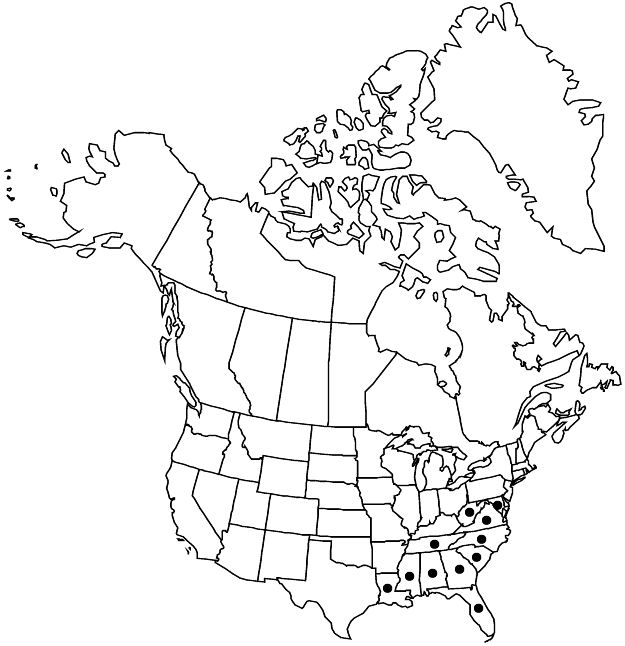Euphorbia pubentissima
Fl. Bor.-Amer. 2: 212. 1803.
Herbs, perennial, with spreading rootstock. Stems erect, usually unbranched, occasionally few branched distally, solitary or few, previous year's dead stems not persistent, 30–65 cm, usually glabrous, rarely villous. Leaves alternate; stipules 1 mm; petiole (0–)1–2(–10) mm, glabrous or densely villous; blade lanceolate, lance-ovate, elliptic, or obovate, 40–68 × 6–18 mm, often reflexed, base cuneate to rounded, margins entire, apex usually rounded, sometimes broadly acute, abaxial surface glabrous or villous, adaxial surface usually glabrous, rarely sparsely villous; venation occasionally obscure on small leaves, midvein conspicuous. Cyathia in terminal pleiochasia; peduncle 1–5 mm (or 15–40 mm on early flowering individuals), usually glabrous, occasionally sparsely villous. Involucre campanulate or hemispheric, 1.3–1.7 × 1.8–2.2 mm, glabrous or villous; glands 5 (7–10 on central cyathium), green, reniform or broadly elliptic, 0.3–0.5 × 0.5–0.8 mm; appendages white, orbiculate or narrowly flabellate, 1–2.2 × 1.5 mm, entire. Staminate flowers 20–25. Pistillate flowers: ovary glabrous or sparsely villous; styles 0.6–1.1 mm, 2-fid 1/2 length. Capsules globose, 2–2.4 × 3.3–4.8 mm, glabrous or sparsely villous; columella 1.8–2.1 mm. Seeds light gray, ovoid, 2.2–2.4 × 1.6–1.8 mm, with shallow depressions; caruncle absent.
Phenology: Flowering and fruiting spring–fall.
Habitat: Open fields, cliffs, woods, floodplains.
Elevation: 0–900 m.
Distribution

Ala., Fla., Ga., La., Md., Miss., N.C., S.C., Tenn., Va., W.Va.
Discussion
The taxonomic history of Euphorbia pubentissima is complex. The species has been included within a very broadly defined E. corollata in the past. Therefore, its geographic distribution appears significantly more wide-ranging in some treatments. The framework established by M. J. Huft (1979) and later by K. R. Park (1998) is followed here. Euphorbia pubentissima is recognized as a variable species restricted to the southeastern United States. The species can be distinguished from E. corollata by its shorter involucral gland appendages and smaller seeds. Euphorbia paniculata Elliott, which sometimes is applied to E. pubentissima, is an illegitimate name (a later homonym of Euphorbia paniculata Desfontaines).
Selected References
None.